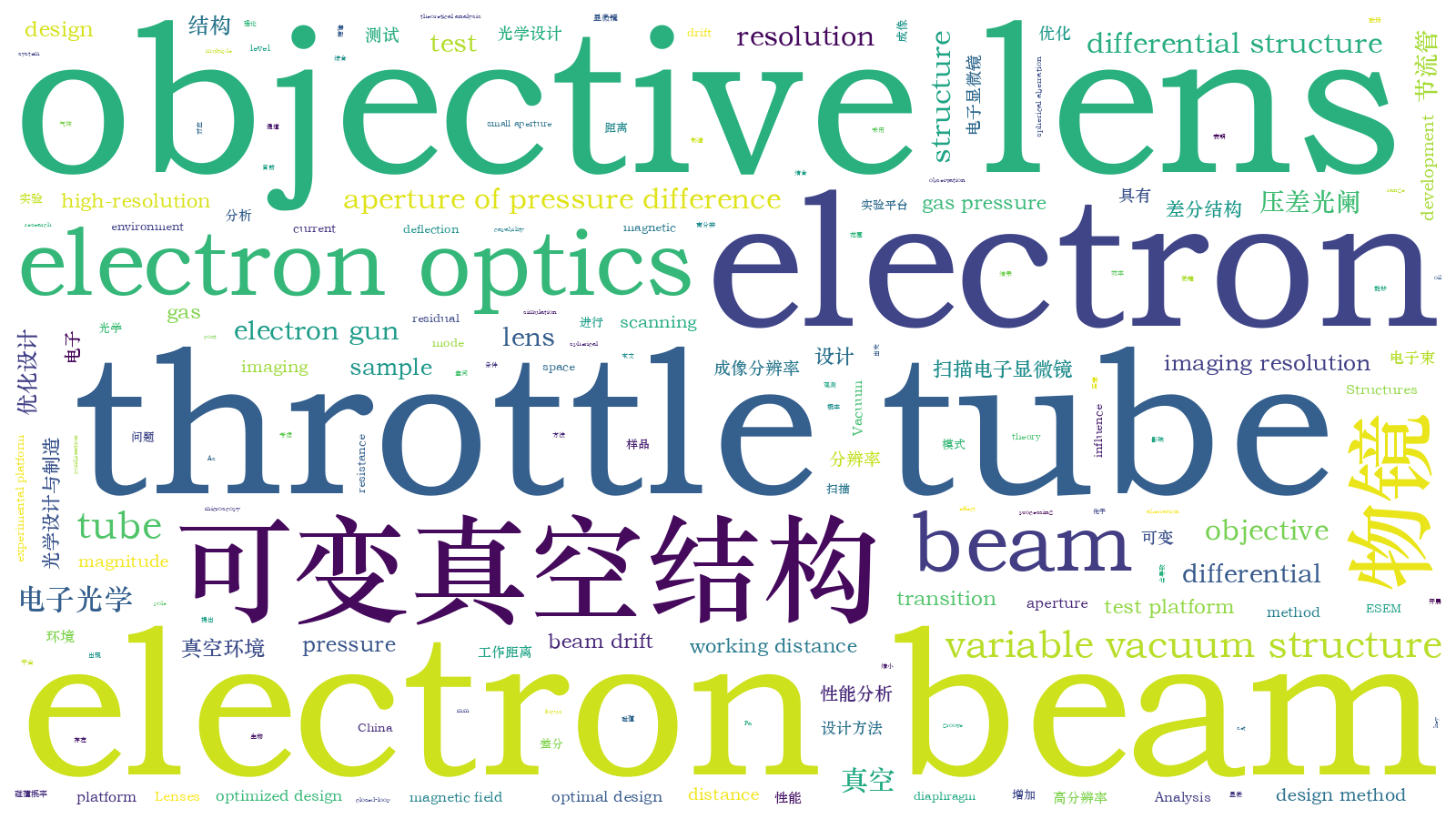具有可变真空结构的物镜优化设计及性能分析【增强内容出版】
Environmental scanning electron microscopes (ESEMs) are widely employed for high-resolution observation of water containing, oil containing, and biological samples in low vacuum environments. However, at present, the development of ESEMs in China is almost blank, and most of them need to rely on imports. Therefore, the research on ESEMs can help improve China's independent development capability in this field, and provide a theoretical and experimental basis for the development of ESEMs in the future. Compared with conventional electron microscopy, the sample chamber of ESEMs should be in a low vacuum or ambient state. The vacuum value is generally on the order of 100 Pa, while that of the electron beam channel and the electron gun needs to be less than 1
Starting from the theory of electron optics, we consider the structure of the objective lens and the vacuum differential structure in the ESEM comprehensively. Firstly, two throttle tubes are designed between the sample chamber and the electron beam channel (near the lower pole shoe of the objective lens), and a transition zone is added inside the objective lens to form a three-level vacuum differential structure of the sample chamber, the transition zone and the electron beam channel. The vacuum in the transition zone should be two orders of magnitude higher than that in the sample chamber, and that in the electron beam channel should be two to three orders of magnitude higher than that in the transition zone. Considering the processing cost and difficulty of the elongated throttle tube, we adopt the combination of multiple diaphragms, which can more conveniently change the vacuum level by adjusting the aperture and number of diaphragm sheets in the diaphragm groove to achieve the required differential pressure difference. Then, the optimized design of a high-resolution ESEM objective lens and deflector is carried out based on a double-throttle vacuum resistance structure. Finally, an experimental platform is set up, and the objective magnetic field test, vacuum differential pressure test, and resolution test are carried out for validation.
Considering the objective structure and vacuum differential structure in the ESEM, a double throttle tube vacuum resistance structure as shown in Fig. 2 is designed to form a three-stage differential test structure (Fig. 10). This design can reduce the length of the throttle tube as a whole, which lowers the requirements for the aperture and length of the throttle tube to a certain extent, and thus reduces the influence on the working distance and the deflection field. Meanwhile, it can also reduce the gas residual situation in the narrow throttle tube, and reduce the influence of the electron beam drift in the narrow gas space in the throttle tube. The results of the vacuum differential pressure test show that the vacuum in the transition vacuum zone is two orders of magnitude higher than that in the sample chamber, and the vacuum in the electron beam channel is two to three orders of magnitude higher than that in the transition vacuum zone, which can meet the design requirements. The resolution test results show that in the current experimental conditions and the low vacuum environment mode of 133 Pa, the imaging resolution corresponding to the 20 μm×20 μm scanning field is better than 50 nm, and that corresponding to the 80 μm×80 μm scanning field is better than 100 nm when the working distance is 15 mm (Fig. 13).
Starting from the electron optics theory, we consider the objective lens structure and vacuum differential structure in the ESEM comprehensively, and the two are combined for the optimal design to provide a design method for the objective lens with variable vacuum structures. Systematic analyses, calculations, and simulations are carried out. Based on the theoretical analysis and simulation results, a magnetic field test platform and an ESEM experimental test platform are built for experiments, and the results show that in the current experimental conditions and low vacuum environment mode, the imaging resolution of 20 μm×20 μm scanning field corresponds to a resolution of better than 50 nm when the working distance is 15 mm. The overall closed-loop design and test of the objective lens with variable vacuum structures provide a theoretical and experimental basis for the development of ESEM.
史丽娜, 王鹏飞, 刘俊标, 王岩, 殷伯华, 韩立. 具有可变真空结构的物镜优化设计及性能分析[J]. 光学学报, 2024, 44(5): 0522002. Lina Shi, Pengfei Wang, Junbiao Liu, Yan Wang, Bohua Yin, Li Han. Optimized Design and Performance Analysis of Objective Lenses with Variable Vacuum Structures[J]. Acta Optica Sinica, 2024, 44(5): 0522002.







